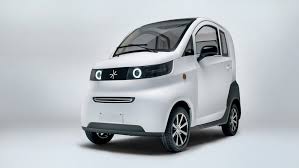Electric vehicles (EVs) have long been celebrated as the future of transportation, but recent reports suggest a slowdown in sales that might seem alarming at first glance. The headlines may paint a picture of a faltering EV revolution, but experts are urging caution and highlighting that the slowdown is a natural part of the market’s maturation process.
Challenges Facing the EV Market
One of the primary concerns is the flattening growth rate. After years of rapid expansion, the growth trajectory for EV sales appears to be leveling off. According to John Voelcker, a contributing editor at Car and Driver, the surge in sales may have been driven by an initial wave of early adopters whose enthusiasm has now tapered off.
Additionally, the significant price reductions by Tesla and other manufacturers, which previously stimulated sales, are diminishing. Federal tax credits for EVs, reduced under the Inflation Reduction Act, have also contributed to this trend.
Inventory issues have surfaced as another challenge. Automakers might have overestimated initial demand, resulting in an oversupply of certain models. This situation, coupled with rising interest rates, has complicated efforts to move inventory.
Another ongoing concern is charging infrastructure. Despite advances, range anxiety remains a significant barrier for many potential EV buyers. The national charging network is still inconsistent, which partially explains Ford’s recent decision to cut production of its F-150 Lightning pickup truck.
Moreover, the EV market is now more competitive than ever. With every major automaker entering the fray, the competition has intensified. Some high-priced EV models are failing to meet sales expectations, reflecting the challenges of aligning product offerings with consumer demand.
Reasons for Continued Optimism
Despite these obstacles, experts argue that the slowdown does not signal the end of the EV revolution. The market is expected to grow, albeit at a slower pace. Ed Kim, president of AutoPacific, projects EV sales to reach 1.5 million units in 2024 and 2 million by 2025.
New models and features are expected to drive future growth. The arrival of innovative electric SUVs such as the Kia EV9, Chevy Blazer EV, and Volvo EX30 offers a wider array of options to meet diverse consumer needs. Additionally, the adoption of the North American Charging Standard (NACS) port is anticipated to enhance the charging experience.
Tesla remains a dominant force in the market. The company is set to release updates for its popular Model Y and Model 3 models next year, ensuring their continued competitiveness. Furthermore, the introduction of more affordable options, like the Volvo EX30 starting under $35,000, could broaden the appeal of EVs to mainstream buyers.
Traditional car manufacturers are also making significant strides in the EV sector. Brands such as Jaguar Land Rover are entering the market with high-performance models, like the electric Range Rover SUV, adding further variety and appeal.
Looking Ahead
The EV market is navigating through a period of consolidation and adaptation, which is a normal part of its evolution. The road ahead includes several promising developments:
- More Affordable Options: Automakers are expected to focus on creating more budget-friendly EVs, which will make electric vehicles more accessible to a larger audience.
- Enhanced Charging Infrastructure: Continued investment in charging networks will address range anxiety and improve the overall convenience of owning an EV.
- Family-Friendly Electric SUVs: The introduction of three-row electric SUVs will cater to families and could significantly boost sales.
- Increased Competition: As competition escalates, the market will likely see more innovation and differentiation in EV offerings, which could benefit consumers.
In summary, while the pace of the EV revolution may have slowed, the long-term outlook remains positive. With advancements in technology, more affordable models, and improvements in infrastructure, the future of electric vehicles continues to hold promise.



